previous page: Mid-Atlantic Tour overview
Outer Banks, NC
The outer banks of North
Carolina ("OBX") are renowned for birding. Perhaps the most well-known
location on OBX is Cape Hatteras, though I've rarely seen much at the
Cape itself, and prefer to spend my time on Pea Island which is just a
few miles north of the cape. At the Pea Island visitor
center are
several large ponds where shorebirds and waterfowl can often be seen.
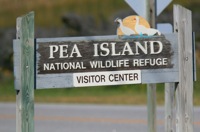
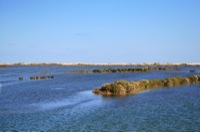
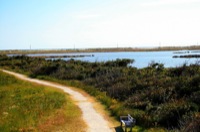
In the North Pond were a number of herons, egrets, and Pintail
ducks. A few White Pelicans and White Ibises also flew overhead (CLICK
TO
ZOOM):
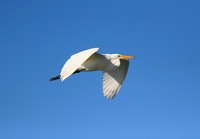
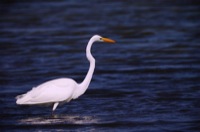
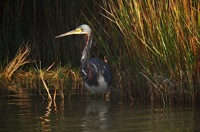
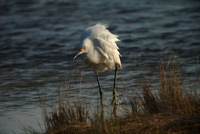

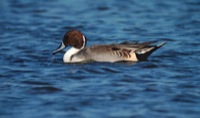
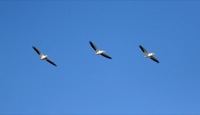
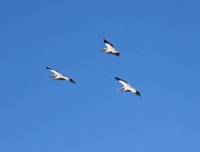
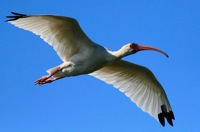
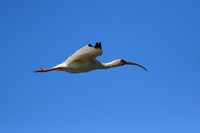
Resting beside the North Pond I found this sandpiper:
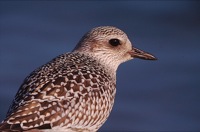
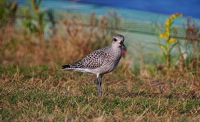
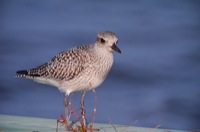
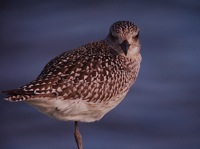
A long line of bushes separating two of the ponds were found to
harbour many yellow-rumped warblers:
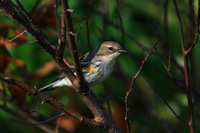
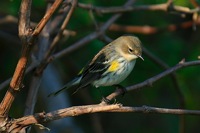
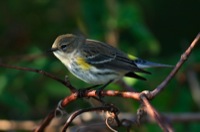
A vacant nest platform was the scene of an apparent domestic
dispute between two gulls:
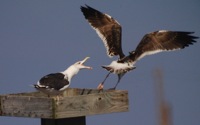
As I was returning to the car, an enormous
snapping turtle hauled out of one of the ponds and began making his
slow way to another, smaller, pond by the parking lot.
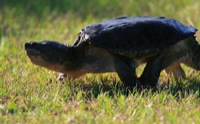
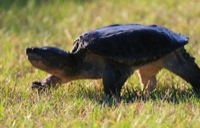
A sign near the
parking lot urges visitors not to feed the wildlife -- it is well known among regular
visitors that this particular turtle is one of the reasons for the
sign, and, true to form, he (or she) quickly switched into begging mode
upon reaching the water:
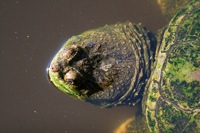
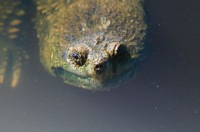
Across the highway (Route 12) from the Pea Island visitor center,
separated by only a single sand dune, is the Atlantic beach, which at
OBX can at times literally teem with birds:
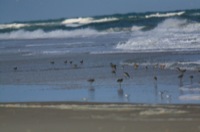
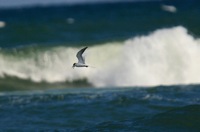
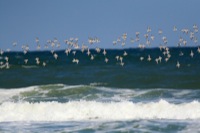
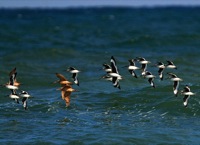
The most common shorebirds along the beach during this trip were
the Willets:
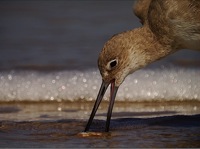
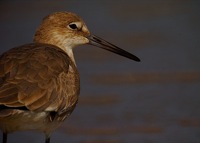
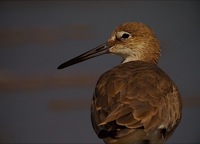
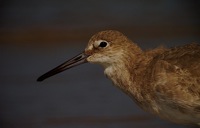
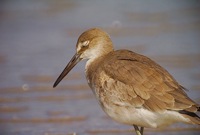
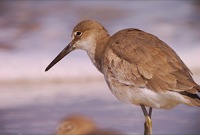
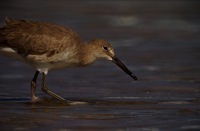
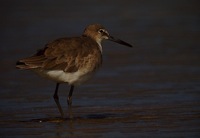
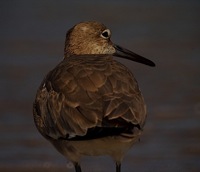
The Willet's long
legs and long beak make it an ideal predator of ocean invertebrates at
the
water's edge:
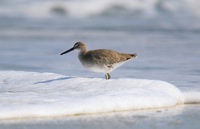
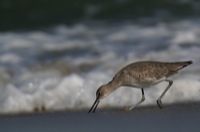
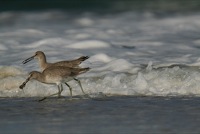
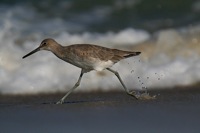
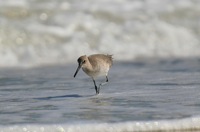
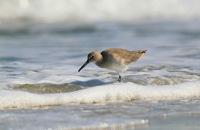
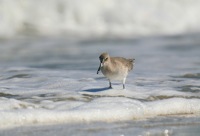
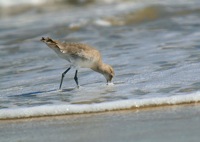
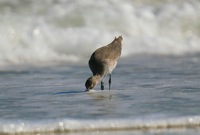
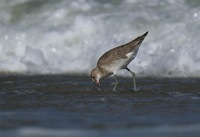
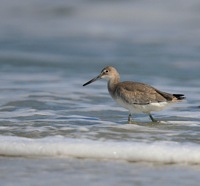
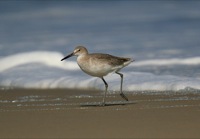
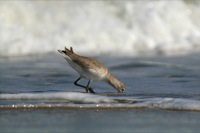
Occasionally accompanying the Willets, but in smaller numbers,
were the strikingly beautiful Marbled Godwits:
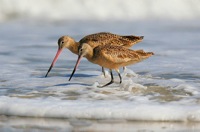
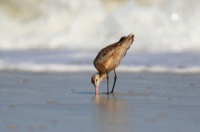
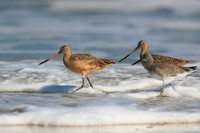
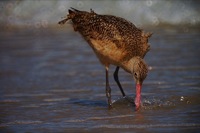
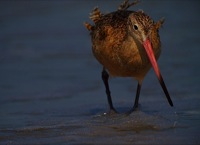
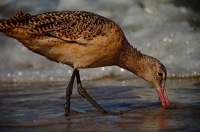
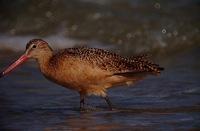
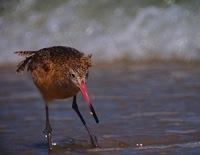
The Sanderling (below) is, by comparison, a much smaller bird than
the Willet or the Godwit, with short legs and a short beak. They can be
easily overlooked, due to their small size and tendency to blend in to
their surroundings. Because their legs are so short, when the ocean
waves come in and out they must run very rapidly to stay at the water's
edge:
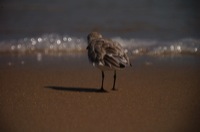
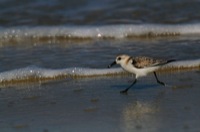
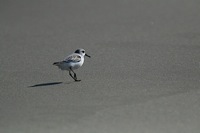
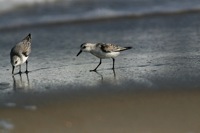
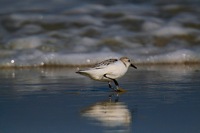
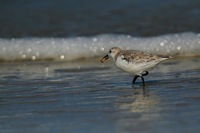
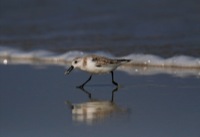
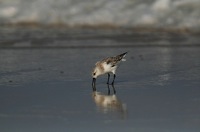
Brown Pelicans were often seen far out over the water as they dove for
fish beneath the waves, though I opted mostly to photograph them when
they were at closer range:
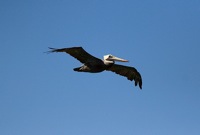
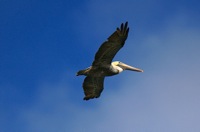
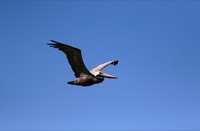
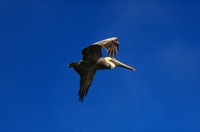
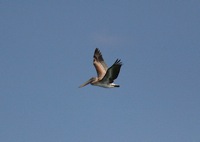
Finally, there were the ever-present gulls and terns, with the
gulls mostly lounging on the beach and the terns almost invariably
hunting on the wing:
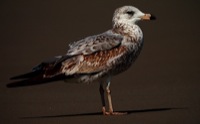
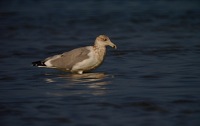
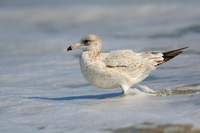
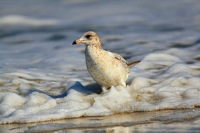
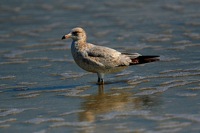
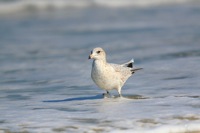
The gulls (above) can largely be discerned from the terns (below) by
the latter's sharper beak and often pointier wings. Some terns also
have forked tails.
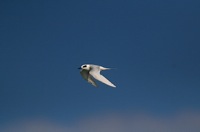
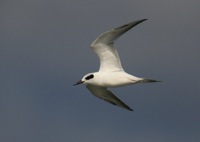
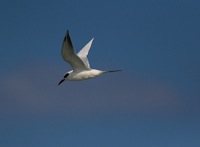
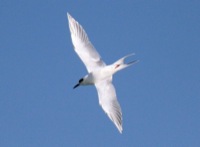
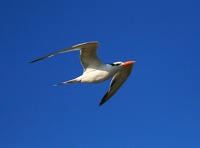
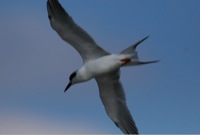
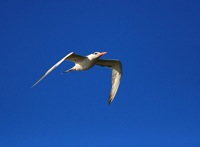
A local birder informed me that the cold front which had passed
through the previous night had apparently swept away large numbers of
birds which he had observed the preceding day; indeed, I found the
pickings fairly slim apart from the specimens pictured above. During
the following evening the clouds began to roll in, so that the sun was
nowhere to be seen the following morning as I continued my journey
northward into Virginia.
next page: Chincoteague, VA




















































































